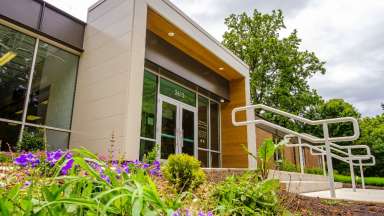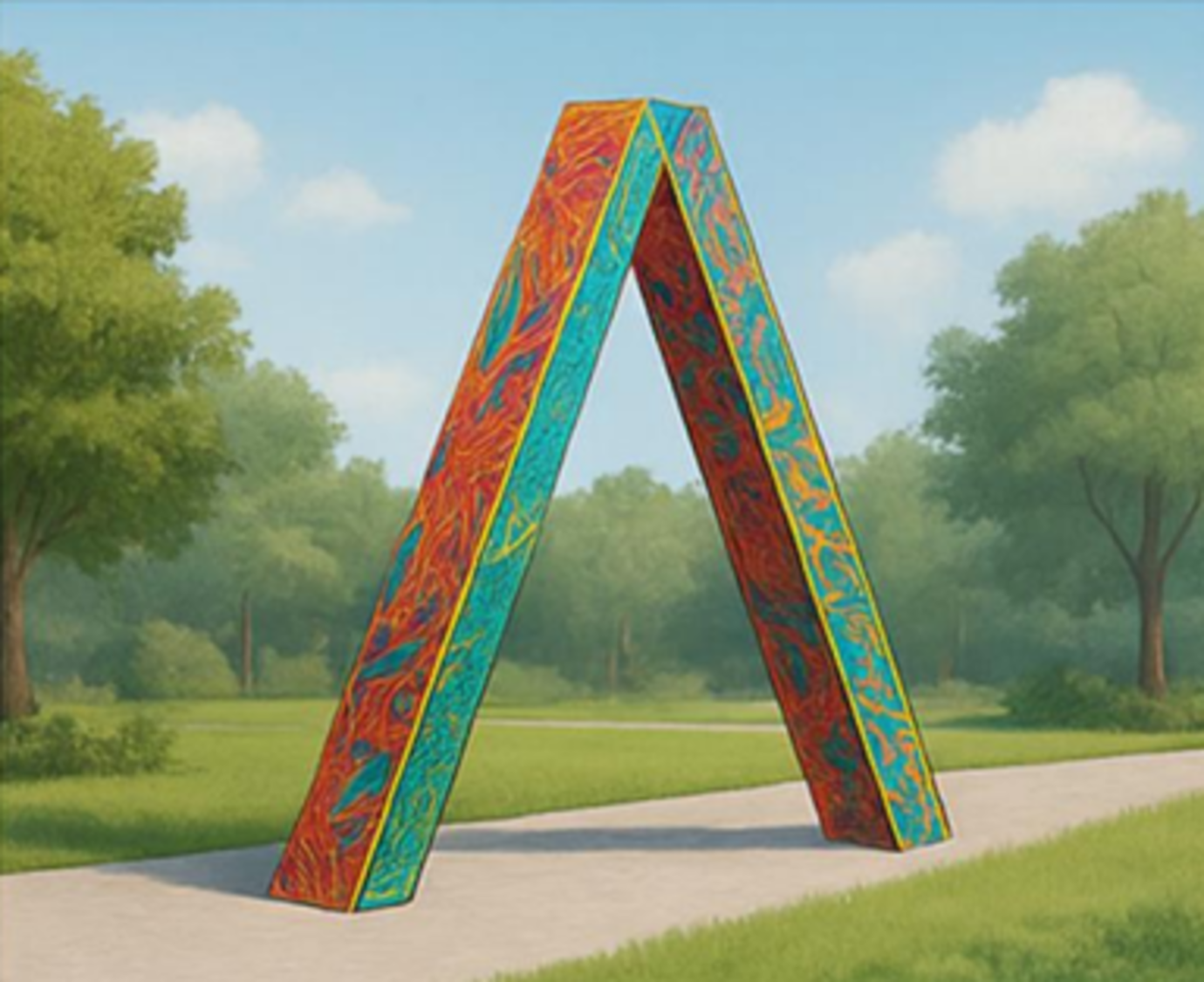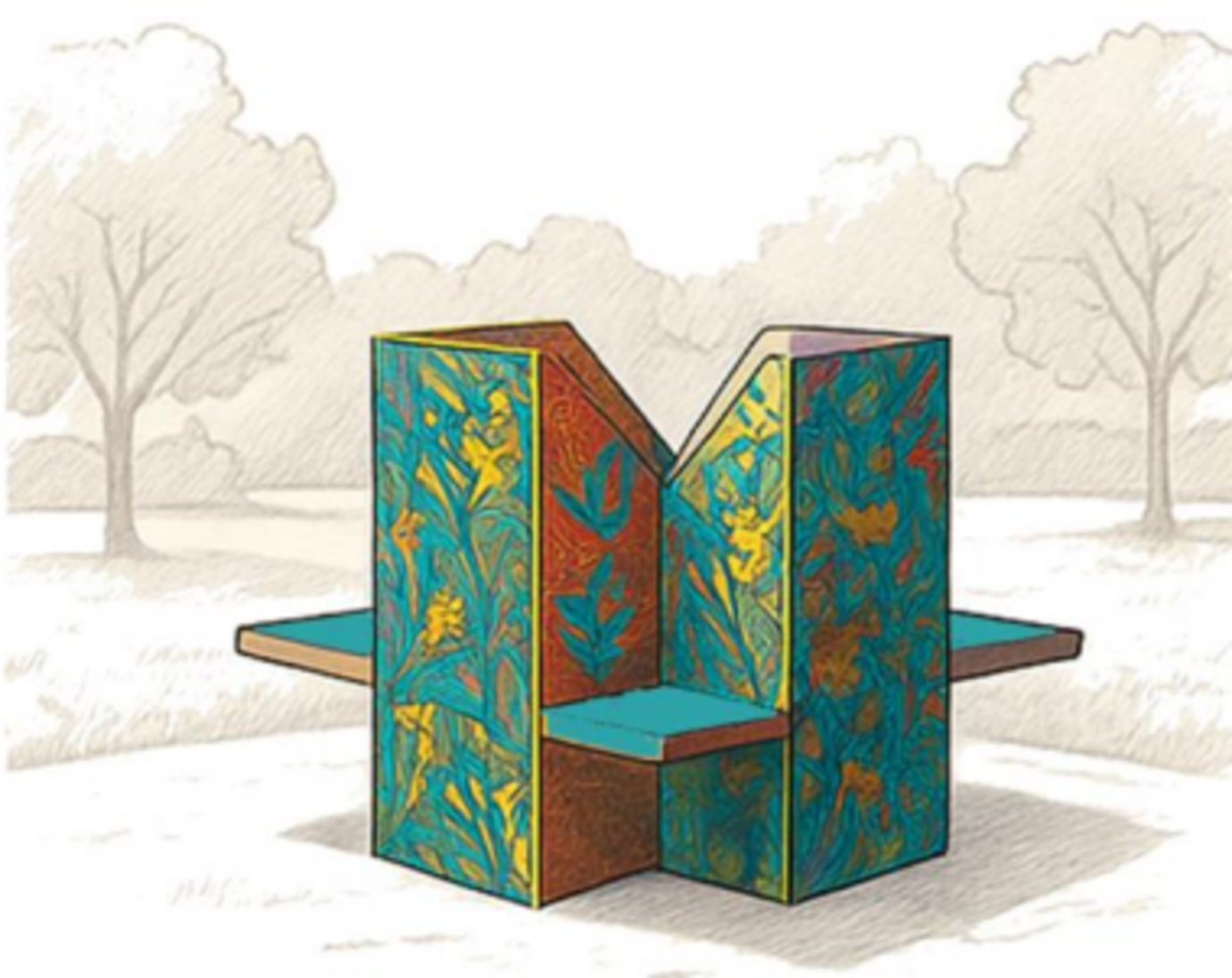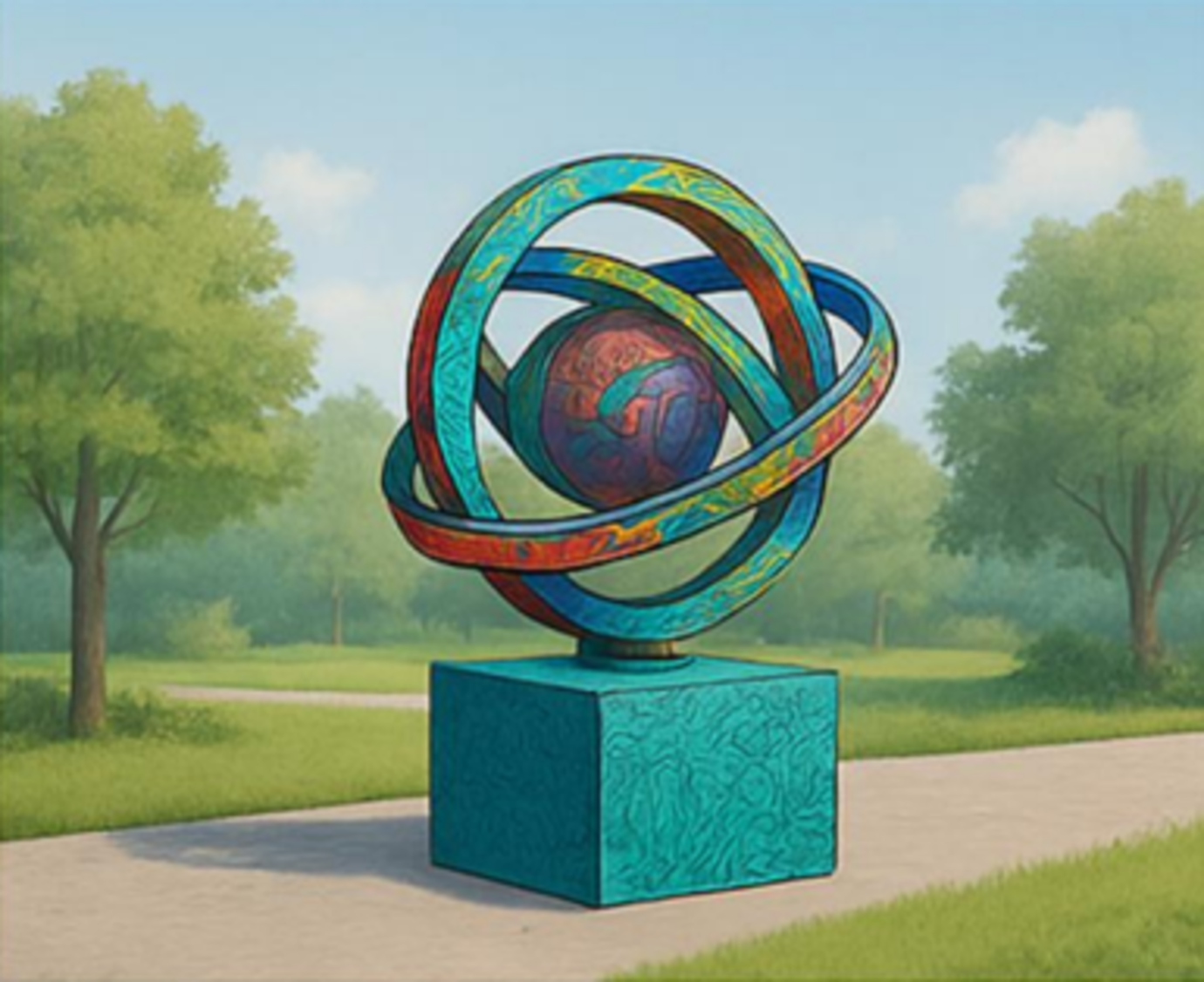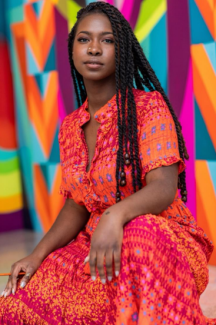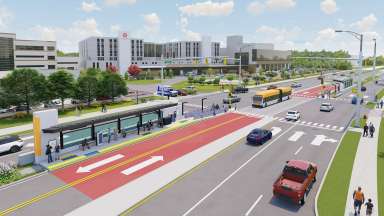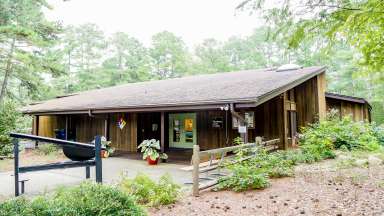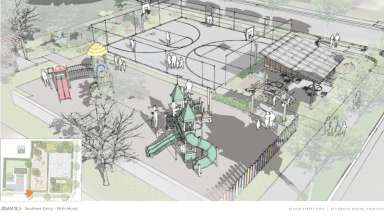Jump To:
About the Artist
Georgie Nakima is a contemporary artist based in Charlotte, NC, and the creator of Garden of Journey, a visual exploration of identity, nature, and the human experience. Her work focuses on public art and the relationship between 2D and 3D space through illustration, mixed media painting, and sculptural installations, characterized by vibrant colors, intricate linework, and surreal compositions. Her art reflects a deep connection to Black and Indigenous heritage, and the interplay between reality and imagination, drawing inspiration from nature, mythology, and Afrofuturism.
Self-taught and formally trained in the sciences, Georgie has honed her craft through years of experimentation. Her work has been featured in the Mint Museum, Ackland Museum, Starbucks, and the World Trade Center, as well as in publications like Elle Magazine, The Boston Globe, and ArtForum. Through Garden of Journey, Georgie invites viewers on a visual odyssey, exploring the beauty and complexity of life’s ever-evolving path, using art as a means of connection and transformation.
